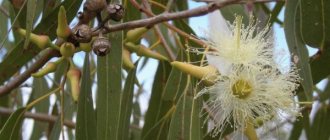What do lupine seeds look like?
This culture surprises with its beauty and diversity. In its natural form, Lupine grows almost all over the world. Currently, there are about 200 varieties of it.
The characteristic features of Lupine are excellent drought resistance and ease of care in adulthood.
When the crop fades, it throws out its seeds. Their color, size and even shape may vary.
Mediterranean varieties have larger lupine beans than Western varieties
The seeds of the crop look like flat-round beige beans with smooth skin. But when they ripen, they crack and very small grains spill out.
Important! Lupine can be used not only as a flowerbed decoration, but also as green manure. And on the farm there is a type of fodder lupine.
Reviews
We bought a house with a very neglected garden plot. The weeds grew taller than my head. Somehow we weeded everything and decided that the land needed to be fed with green manure. We chose blue and white lupins for this purpose - both beautiful and useful. The white one had to be watered regularly. Weeding was done throughout the entire area because the weeds did not allow the sprouts to grow. In the end, we won the fight against the weeds; we mowed down the lupins and dug up the ground along with them. The next year we saw how good the potatoes grew in the areas where the lupine grew.
Alexandra, 30 years old, Berezniki
At first, my wife grew only decorative lupins. Then we learned about their benefits as green manure. We tried to sow in the beds after early radishes. In August, after mowing the lupins, we did not embed them in the soil, but sent them to the compost heap. Radishes were again sown in the same beds. It turned out that the autumn harvest turned out to be richer than that collected in the spring.
Andrey, 42 years old, Yalta
With the help of green manure, and we sow not only lupine, but also oats, rye, and phacelia, we obtained quite fertile soil from clay soil. When it’s time to sow lupine, I don’t particularly care for it. The main thing for these handsome green manures is to water them on time. I sow in early spring, then in their place I plant tomato seedlings. I get good yields, the tomatoes don’t get sick, but I still feed them on the leaves, especially when the tomatoes start to set.
Veronica, 58 years old Dobrush
Natalia
Author
Ask a Question
Lupines are beautiful and healthy green manures with fruits that can replace soybeans, feed animals, and improve people’s health. The more gardeners use these plants in their gardens, the more often they can be read about and seen on blogs. There are practically no negative reviews. And most likely this is deserved, because with the skillful use of green manure, they cannot harm either people or the earth. Health to you and your loved ones!
When to plant lupine seeds for seedlings
It must be taken into account that for the full development of the culture it takes from 30 to 50 days after the appearance of the sprout. If you sow lupine seeds correctly for seedlings, the first leaves can be seen within 1-2 weeks. Based on the timing, it is recommended to calculate the start date for growing the flower, taking into account the region: 1.5 months before transferring it to open ground.
The generally accepted estimated time frame for the procedure is the end of March or the beginning of April. Taking into account regional characteristics, it is best to grow lupine seeds in the central zone in the first week of April. In Siberia and the Urals, this deadline is shifted: all work begins a week later. But in the southern regions, growing seedlings is allowed from mid-March.
Possible problems
Problems with growing heat-loving white lupine will arise if frosts below -5°C return after germination. These species require watering during drought. Narrow-leaved species will not grow on alkaline, dense, low-permeability soils with close occurrence of soil water. The optimal acidity for blue lupins is 5.0–5.5 pH. They are not sown after rapeseed due to the risk of damage by nematodes. If seeds are sown in areas heavily clogged with seeds and roots of weeds, then additional weeding and loosening will have to be carried out to remove weeds.
How to grow lupine seedlings from seeds at home
And although an adult flower is easy to care for, the seedling is very picky. Despite the fact that growing perennial lupine from seeds seems like a simple task, you should know a number of nuances when working with the plant.
Selection of capacity
Preparing the container is necessary taking into account the peculiarities of the root system of the flower. It is of a rod type and is sensitive to damage. Based on this, transferring seedlings to open ground with further cultivation is possible only by transshipment.
It is best to plant lupine seeds as seedlings in spring in individual large glass pots or containers. The height of each container for growing a flower should be 10-12 cm, and the diameter should be at least 7-10 cm.
An alternative to individual containers is wooden or plastic boxes, but seeds must be placed in them at a great distance
Soil preparation
Choosing soil is not difficult: you can buy it in a store or prepare it yourself. Propagation of lupine by seeds and its subsequent cultivation should be carried out in light, loose and moisture-permeable soil.
When preparing soil for seedlings yourself, you need to mix peat, turf soil and sand in a ratio of 1:1:0.5. All ingredients must be combined evenly until a homogeneous consistency is obtained.
Seed selection and preparation
It is not recommended to plant lupins in spring without pre-treatment. The yield of seedlings and the quality of seedlings depend on the preparation of seeds.
Only whole beans without signs of rot or damage can be grown. It is advisable to reject very small and deformed samples.
All work is divided into two stages:
- The seeds need to be germinated. To do this, wrap them in cotton cloth and dip them in clean water. Place the workpiece in a plastic bag and tie it. Transfer the lupine to a room where the temperature is not lower than + 23-26 °C. Every day, the future seedlings are checked: as soon as they hatch, immediately move on to the next stage. If mold appears during germination, wash the beans and wrap them in new cloth.
- Treat the seeds with a special powder. To obtain it, it is necessary to thoroughly chop and dry the tubers of adult lupins, and place them in glass containers. If beans are treated with this powder before sowing, the nitrogen-fixing bacteria present on it will promote rapid germination. Such seedlings will be strong and healthy when grown.
Ready for sowing and further bean has a powerful sprout, without signs of rot and wilting
Stratification of lupine seeds at home
Some gardeners are of the opinion that without preliminary mechanical treatment, perennial lupine will not sprout. Growing a flower from seeds involves stratification as the first stage of sowing.
To do this, you need to rub each bean with sandpaper to break the integrity of the peel. Only after this treatment can you wrap the seeds in a damp cloth and wait for germination.
Rules for sowing lupine seedlings
To successfully grow a flower, it is recommended to adhere to the following algorithm:
- Place perlite on the bottom of the container, 2 cm thick. It will serve as drainage.
- Fill the container for future seedlings with soil so that 2-2.5 cm remains to the edge of the top.
- If the container is individual, then place the material in the center of the glass. If the box is shared, then the distance between the seeds should be at least 5 cm.
- Cover the lupine beans with soil. Layer thickness no more than 5 mm.
- Moisten the soil generously with a spray bottle.
- Cover the container with cling film or glass until the shoots appear.
Important! If during work the sprout was accidentally broken, then such a bean is unsuitable for growing. Defective copies should be discarded.
Types, varieties
In nature, there are annual, biennial and perennial varieties. There are about two hundred species in nature. Wolf flower has many varieties. Annuals include:
- hybrid;
- dwarf;
- changeable;
- Hartweg King.
These varieties are particularly demanding in terms of care and conditions. The dwarf variety is also divided into three classes: silver stunted, tiny, pink sorceress. Perennial species are popular among landscape designers. Perennial: multileaf, tree, white, russell, firecracker, minaret, apricot.
Know! Treelike is grown only abroad. Since this perennial does not winter in our country.
Caring for lupine seedlings
The principles of agricultural technology are simple: watering, lighting, fertilizing and ensuring optimal temperature. When planting perennial lupine with seeds, you need to take into account that in the first months of growing the flower you need to make efforts.
Temperature
Favorable conditions for bean germination are lighting and temperature. The temperature in the room should be +20 °C. This indicator is optimal when the first shoots have appeared and the shelter has already been removed. If the room is cold, the process of growing annual lupine from seeds will slow down.
Lighting
The containers should be placed on the windowsill on the south side of the house. If the weather is cloudy, then installing a phytolamp is necessary. It is not necessary to use the device around the clock, but providing the seedlings with light for an additional 3-4 hours will not hurt.
Watering
The soil must be moistened, but moisture stagnation is not allowed. It is best to use a spray bottle in the first stages of cultivation. In the future, watering should be carried out 1-2 times a week, monitoring the condition of the soil.
Top dressing
When growing lupine seedlings, it is not recommended to use fertilizing: there is a risk of disrupting the formation of the root system. And if the seeds grow excessively, it will be difficult to transfer the flower to open ground in the future.
Picking lupine seedlings
The procedure should be carried out when 2-3 true leaves appear. Before picking the seedlings, it should be watered abundantly to make it easier to remove the lupine from the container.
Work algorithm:
- Fill the glasses with nutritious soil.
- Make indentations in them.
- Transfer the seedlings into glasses along with a lump of earth, sprinkle the roots with soil.
- Water the lupine seedlings generously.
To successfully grow a crop during picking, the plant can be dusted with ash as a top dressing
Diseases and pests
Lupine is one of the hardiest plants in gardens and flower beds; it can survive perfectly well without fertilizing and watering
He is practically not afraid of diseases and pests. But sometimes the plant can still be exposed to certain factors.
Most often, lupine suffers from:
- aphids
- weevil
- germ fly larvae
These parasites simply destroy the inflorescence; the plant does not form seeds, which means it has nothing to reproduce with. The only way to fight them is chemically; specialized stores will be the best help here.
Powdery mildew and white rot can also spoil the appearance of boles ; flower beds on marshy soils are especially susceptible to these diseases. Fungi live best there; they have everything they need for their development. It is unlikely that it will be possible to completely eliminate the disease in such an area; it is more effective to simply remove the diseased plants. To avoid such radical methods, it is worth regularly carrying out prevention; for this, plants are sprayed with a weak solution of potassium permanganate or fungicides are used.
If many plants are sick with powdery mildew or white rot, remove them from the site. After this, add lime to the ground and dig up the affected area several times.
In addition, sometimes the leaves of lupine bushes turn yellow, this is also not the norm and can destroy the trunk.
The main reasons may be:
- excess organic matter in the soil
- soil alkalinity
- lack of moisture
To bring the plant back to normal, it is worth caring for it more carefully, perhaps liming the soil and increasing watering.
The standard of shelter in winter is also important ; a large amount of covering material can play a cruel joke. In warm winters, harmful bacteria can become active in leaves, sawdust, or simply under the film, which will subsequently even lead to the death of the trunk. That is why the prevention of fungal diseases should be carried out in early spring, as soon as the lupine is opened after wintering, and in early autumn, before the plant is wrapped before wintering.
Transplanting seedlings into open ground
The optimal time for the procedure is mid or late May. Each lupine should have 5-6 leaves and a strong stem. Before transferring seedlings to open ground, they need to be hardened off. To do this, you need to provide her with fresh air for ten days.
The bed for lupine seedlings should be in a sunny, open place. Dig up the soil in it and fertilize it with organic matter and complex minerals.
Work algorithm:
- Form holes in the flowerbed. There should be a distance of 30-50 cm between them.
- Water the seedlings and remove them from the container.
- Transfer the lupine into the hole along with the earthen lump.
- Cover the roots with soil and compact the soil around the trunk.
Important! The best time to transfer lupine seedlings to open ground is cloudy weather. On hot days, preference should be given to early morning or late evening.
Plant propagation methods
Propagated by seed and by cuttings. The fruits do not always retain the properties of the mother bush. But pink and purple are considered dominant colors, so they may continue into next year. Grains are most often used for breeding experiments. The fruits remain viable for several years.
To create cuttings, you will need a previously disinfected sharp knife. A small part of the neck of the root system is cut off with a tool. Then they dig into sandy soil. After about a month, when rooting occurs, the cuttings are transplanted into a flowerbed.
Why do lupine seedlings die?
When growing crops, gardeners are faced with withering of sprouts. Most often the reasons are the following:
- lack of light: seedlings stretch out, weaken and lie down;
- overmoistening: the crop begins to rot, the soil becomes moldy;
- temperature changes: drafts from a window or door lead to the fact that fragile seedlings die or significantly slow down growth.
Important! Particular attention should be paid to yellowing of the sprouts: this is a sign of the development of chlorosis. The cause of the disease is acidified soil.











